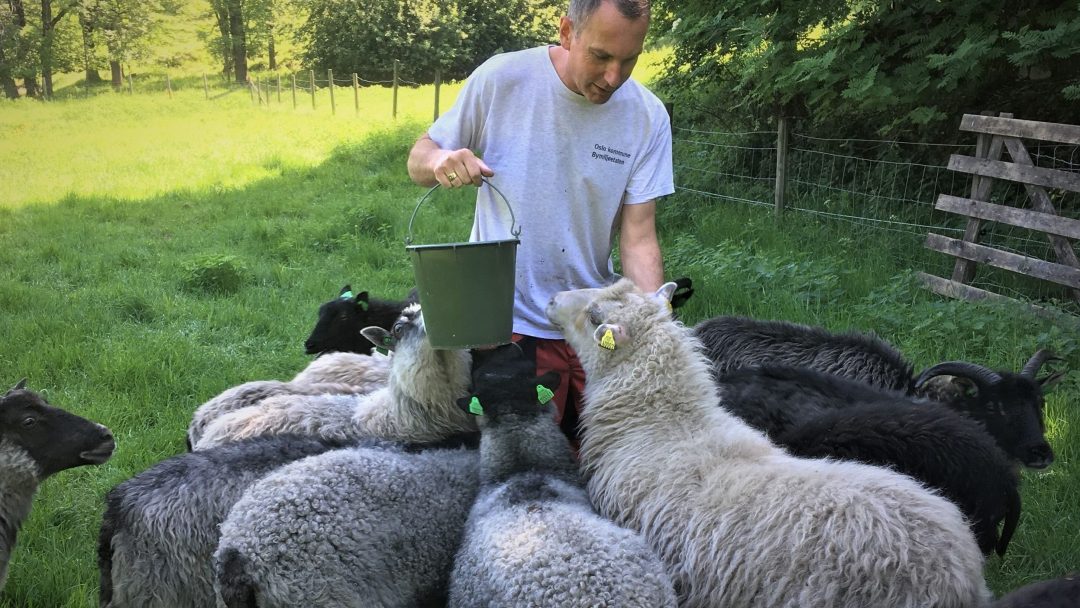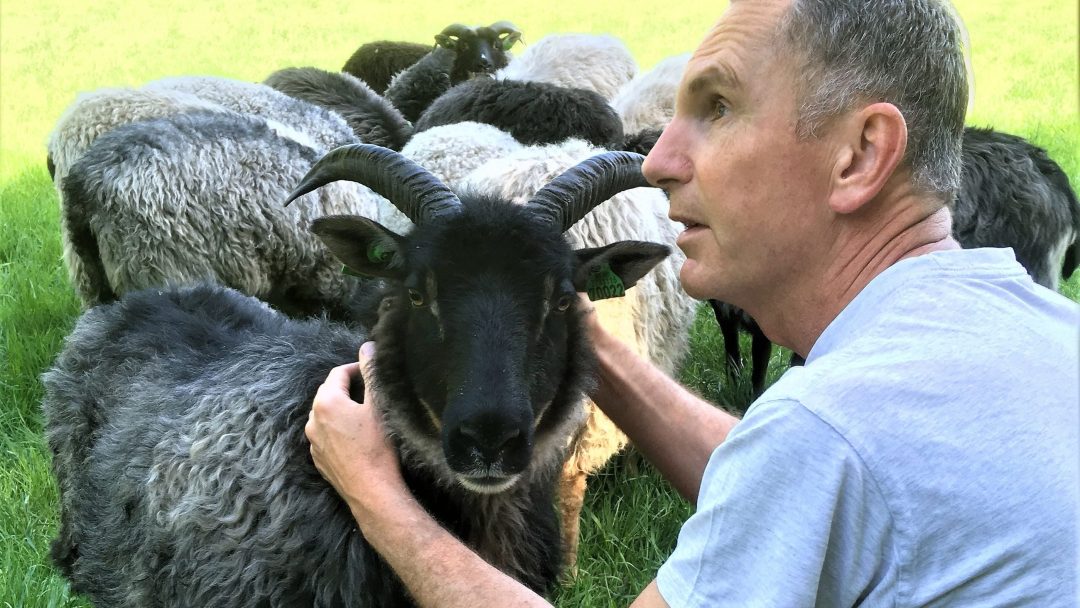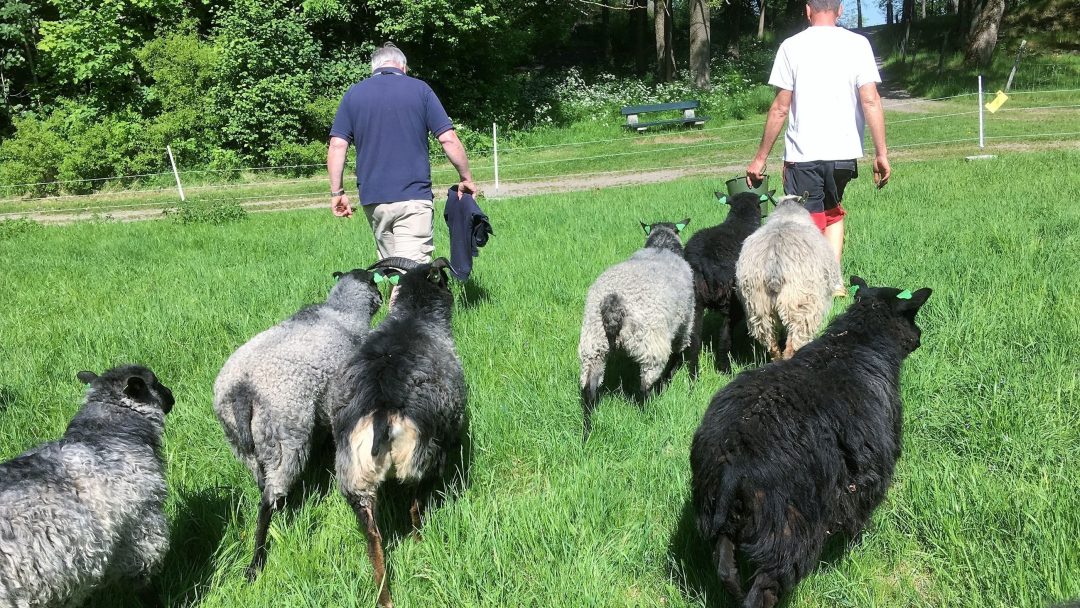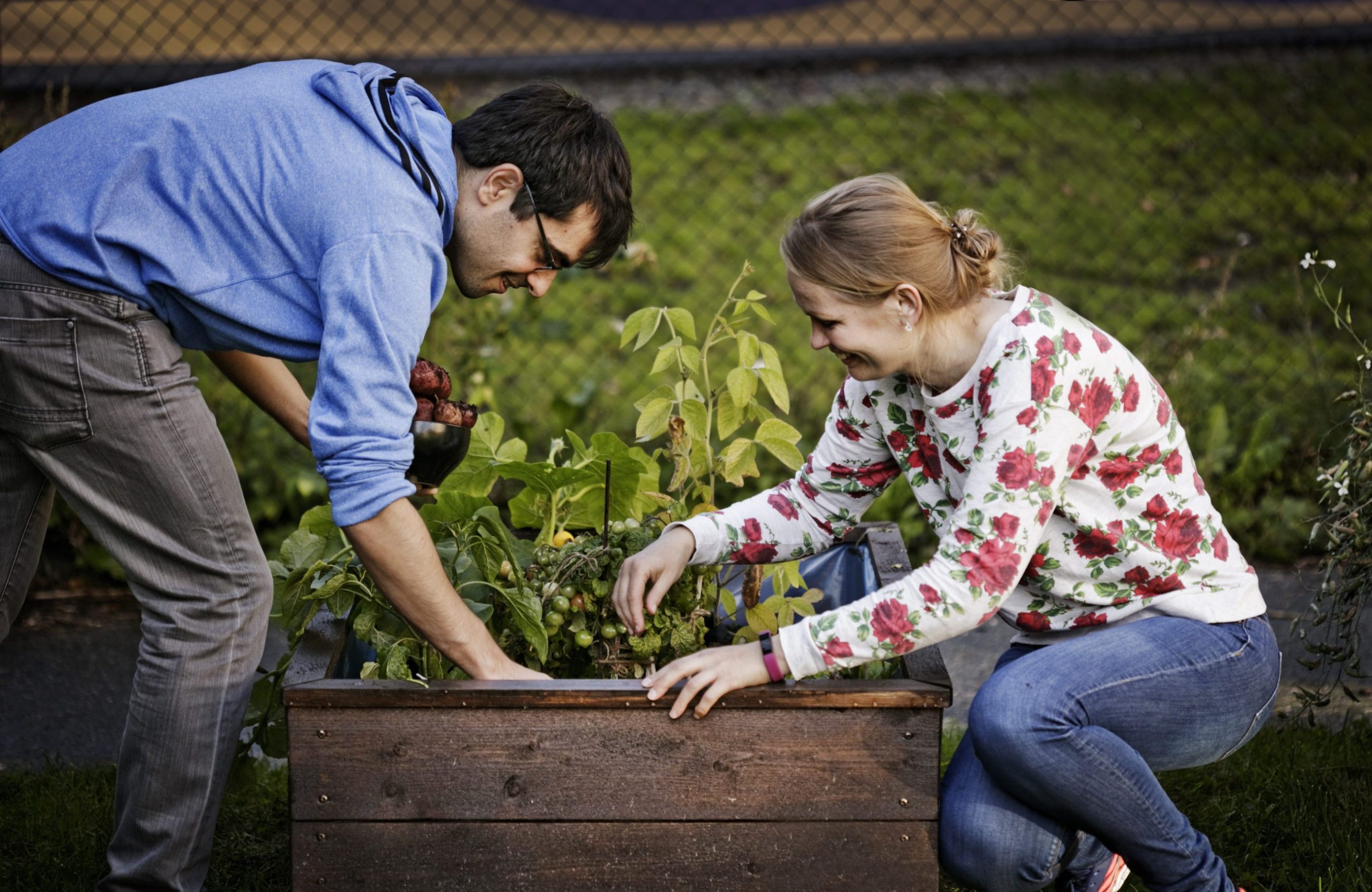Size: large
Type: image
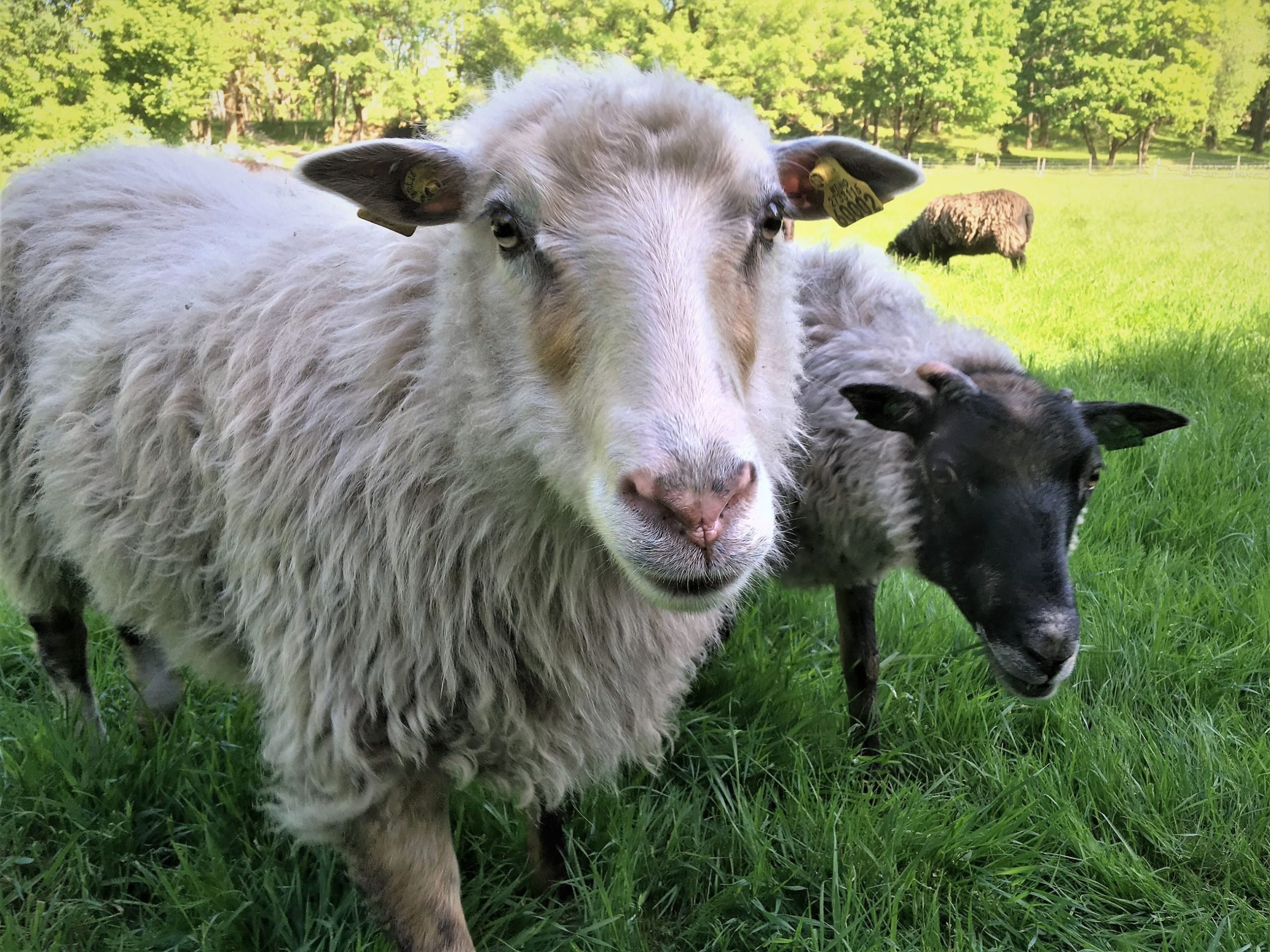
A thousand years ago, Cistercian monks were devoted to managing the open landscape on Hovedøya. Today the task has been assigned to 14 sheep. Thus an important, but very vulnerable, cultural heritage site on Oslo’s busiest island is being carefully managed and preserved.
“We try to preserve Oslo’s biodiversity, to achieve a greener and more biodiverse city,” says Inge Grepstad Kristoffersen, head of cultural heritage sites and grazing animals at the City of Oslo’s Agency for Urban Development.

Inge Grepstad Kristoffersen
He explains about a bonus of using sheep as a workforce:
“You know, people like sheep. There is a high enjoyment factor in having sheep grazing here.” Having said that, “Sheep do a better job than workers in hi-vis jackets,” laughs Kristoffersen.
Now he leaps up onto his boat Langøyene, which will take us from Oslo city centre to idyllic Hovedøya and the agency’s operational unit.
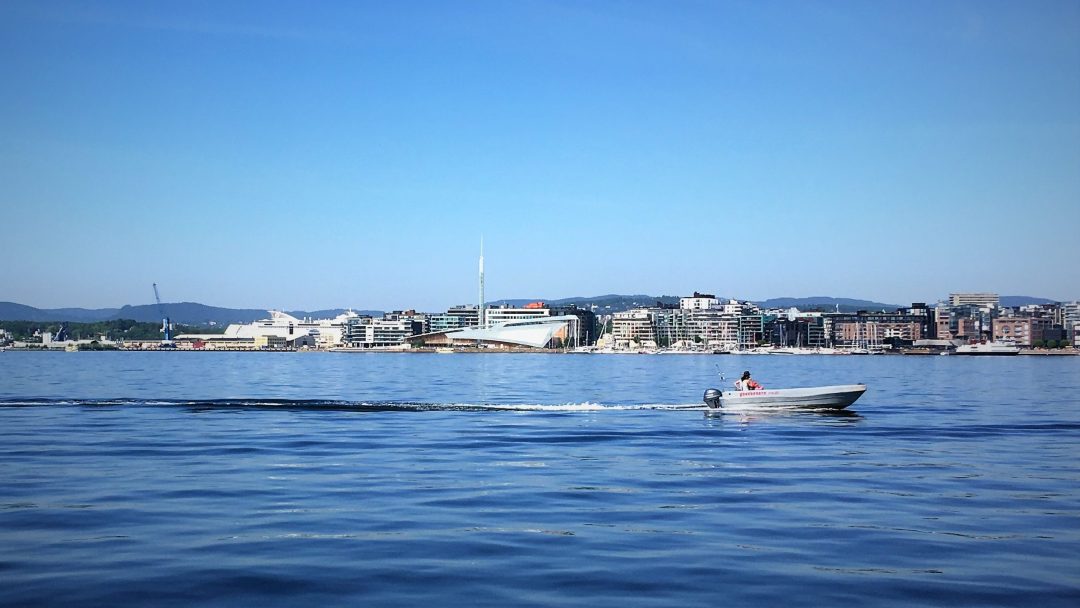
You are never far from the city centre on Hovedøya.
Summer is at its height and people are flocking to Hovedøya.
On the way out of Oslo’s harbour basin, we let the Pearl of Scandinavia ferry, which serves the Oslo-Copenhagen route, go ahead of us. Behind us on Vippetangen towers the Vippa street food complex, which recently obtained funding for an innovative farming operation on its roof. Just 500 metres ahead of us is Hovedøya. Ground-breaking and historic farming practices are at either end of our route.
A cultural island
Hovedøya enjoys the most cultural history, the most visitors and the greatest biodiversity of any of Oslo’s islands. No island in the inner Oslo Fjord has a greater variety of plants than Hovedøya. A Cistercian monastery operated here from the early 12th century. In the 1530s, the island became Crown property. Since 1953, Hovedøya has been managed by the City of Oslo and has benefited the ordinary citizens of Oslo.
Thanks partly to the mediaeval monks, who brought medicinal plants to the island, Hovedøya has an enormous diversity of plant species.
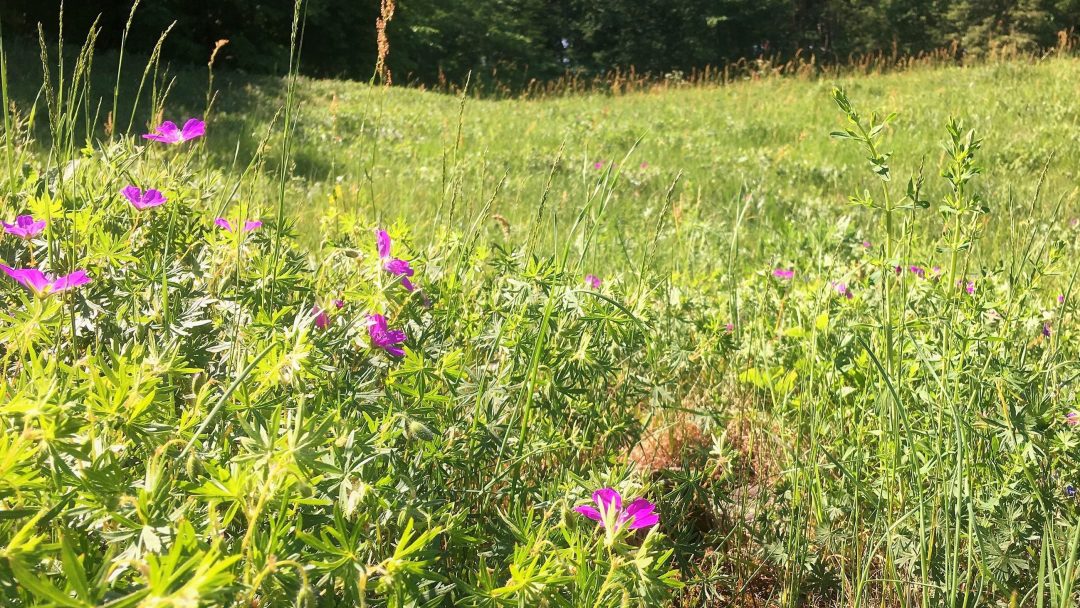
The enormous diversity of plant species on this particular island is dated back to the medieval period.
This diversity of species cannot be maintained without assistance. The number of visitors, particularly since the ferry started to run from Aker Brygge rather than Vippetangen, has increased sharply. The island’s biodiversity is under intense pressure. The very fine balance between conservation and use must be maintained, and the talents of the sheep are used in a careful and considered fashion.
“First and foremost, the sheep reach places that strimmers and other mechanical cutters can’t access. In addition, they don’t make a racket. They do important work, but do it without making any noise,” says Kristoffersen.
The 14 sheep, which actually belong to Bogstad Gård in Sørkedalen, graze in a fenced off area for the first half of the summer, before being allowed to roam freely later in the season. In the first months, they graze an area of over six hectares.
Guardian of biodiversity
We are accompanied by Anders Thevik, who is caretaker and general handyman on Hovedøya. He has a bucket of feed to encourage the animals towards us. The black, grey and white sheep come trotting over as soon as they hear the bucket.
“Why do you have sheep here?”
“To keep the cultural heritage site well maintained. And to make the island more pleasant, and to manage the island actively. And of course it’s a way of preserving biodiversity,” says Thevik.
Far too many people think that biodiversity is something that belongs in the forest, that nature is distinct from culture. I think that’s quite wrong.
He is extremely popular with the sheep, who circle around him and want to be patted and stroked, now that the feed bucket is empty. Thevik has been working on Hovedøya for 11 years. First he had a temporary summer job, then he became the permanent caretaker. Now he lives in the caretaker’s house on Hovedøya all summer, keeping an eye on visitors and sheep alike.
“With so many people, is there a conflict of interest between looking after the sheep and humans?”
“No, there isn’t. But people don’t always obey the requirement to keep dogs on a lead. We have had incidents when sheep have been drowned because of being chased by loose dogs. But it doesn’t happen often,” says Kristoffersen.
The 14 sheep are an old Norwegian short-tailed breed. They are trusting to put it mildly, and rub themselves against us like a gang of lovelorn cats.
According to the Norwegian Institute of Bioeconomy (NIBIO), putting farm animals out to pasture in uncultivated areas has many advantages both for landscape conservation and the animals themselves. This form of management has created a characteristic landscape that many local people identify with. In addition, the open landscape is very attractive for tourism.
“We know that the people who come here prefer having an open landscape to scrub, “ says Anders Thevek.
He has support from biologist Anders Bryhn, senior adviser at Oslo’s Natural History Museum, who is delighted to talk about the challenges posed by forest regrowth at cultural heritage sites.
“We are seeing forest regrowth all over Norway. Maintaining cultural heritage sites is important in that respect,” says Bryhn.
Views and insight
And if there is anything particular they are concerned about here, it is maintaining the open landscape and space for the trees that are characteristic of the island. Ash is the most common tree on Hovedøya. There are also many maples. Kristoffersen estimates that some of the trees are several hundred years old.
Nowhere in Eastern Norway is more biodiverse than Hovedøya. We find flowers such as mountain clover, Northern dragonhead and cranesbill, all of which are important species in Norway. The management work on Hovedøya is a practical response to the United Nations’ efforts to maintain biodiversity.
This concept encompasses all forms of life on earth, and includes millions of plants, animals and micro-organisms, their DNA and the ecosystem they are part of.
“Rich biodiversity is essential, including in Oslo,” says Maja Aarønes, a nature conservationist at Sabima, which is an umbrella organization for biology associations in Norway. She advocates the encouragement of biodiversity everywhere, not just in protected areas.
- You might want to read: – It’s fun we can grow our own food, despite not having our own garden
“Far too many people think that biodiversity is something that belongs in the forest, that nature is distinct from culture. I think that’s quite wrong. We should also encourage biodiversity in the city,” she says.
Despite broad agreement on the importance of preserving biodiversity, the number of species living on Earth is being reduced rapidly.
Back on Hovedøya, we try to tear ourselves away from the island’s 14 affectionate sheep. It’s easier said than done.
“What do you think about your contribution to preserving biodiversity?”
“That it is an important societal task that the City of Oslo takes with the utmost seriousness,” says Kristoffersen.
This story was originally published in Norwegian in June, 2018
